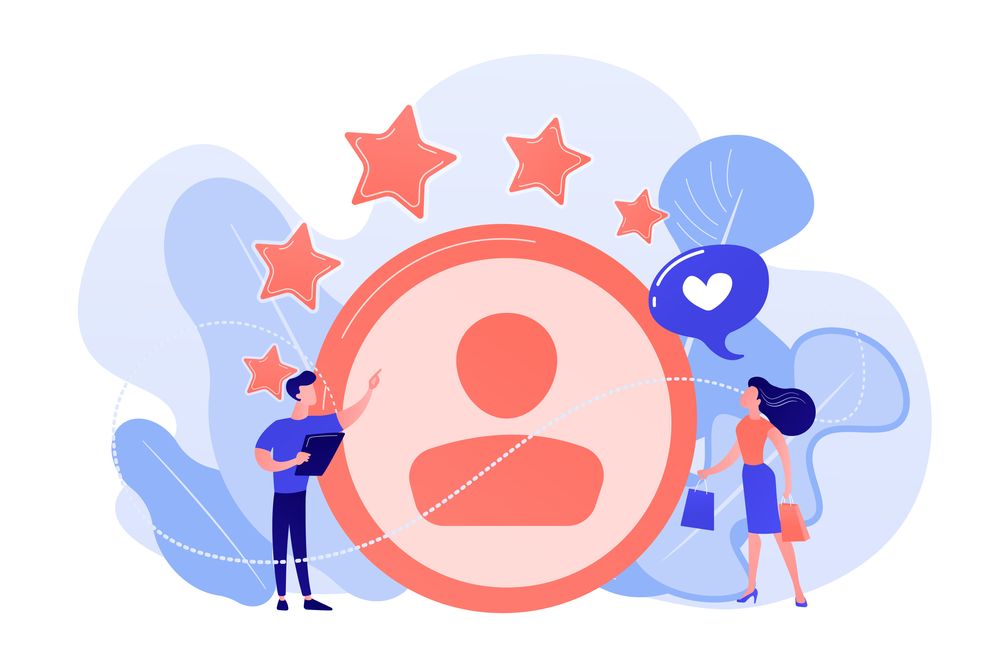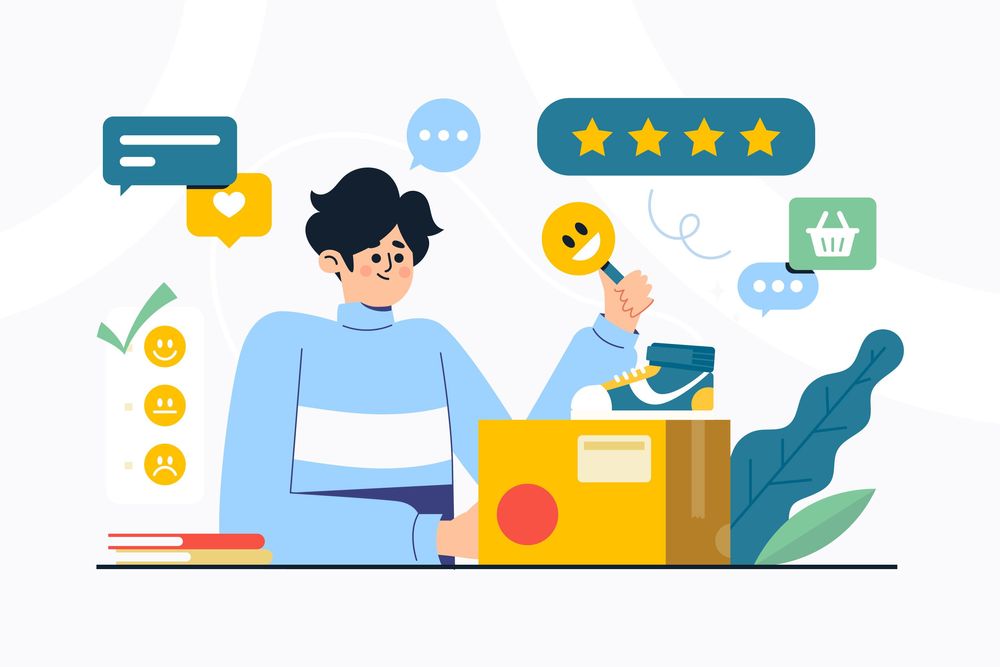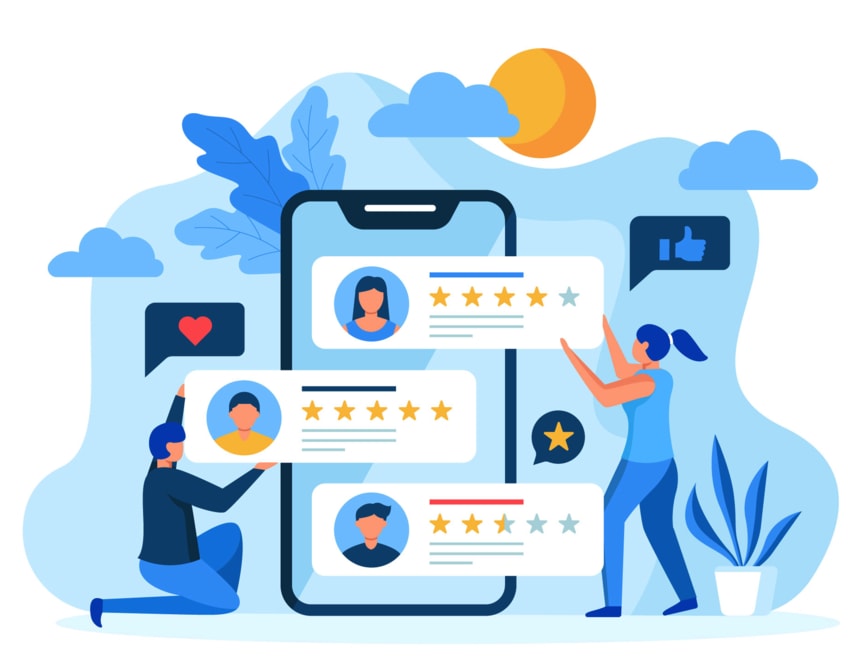Looking to the future is what it means to keep the mass consumer happy in these convenient times. Not to forget the emergence of short-term subscription solutions that ask for little in terms of initial customer investment that somehow don’t live up to the personalized expectations of customers.
With an economy as customer-centered as today’s, it’s no wonder that enterprises out there are dead focused on creating the ideal customer experience for people to enjoy their services with ease, delivering value at every step of the buyer’s journey.
The need to provide value to consumers is the crucial link that helps both customers and enterprises gain success in the long run. Customer value is the main reason why enterprises now focus on ensuring customers achieve success more than a happy experience.
In this article, we’ll discuss what customer experience refers to and how customer success comes into the picture for wholesome customer service.
Customer Success vs Customer Experience
There’s often a lot of confusion around the difference between customer success and customer experience. Customer success is a term that’s become more popular in recent years, but what does it actually mean? And how is it different from customer experience?
Simply put, customer success is all about ensuring that customers get the most value out of your product or service. This means working with them to ensure they’re using it correctly, solving their problems, and achieving their goals. An effective customer success strategy is focused on helping customers achieve mutually beneficial growth and sustained value.
In contrast, customer experience is all about the customer’s perception of your brand. It covers everything from the way they interact with your website to the way they feel after using your product. Customer experience is about creating a positive overall experience for customers at every touchpoint.
So, what’s the difference? Customer success is focused on ensuring that customers are getting value from your product or service thereby increasing upsell opportunities, while customer experience is focused on creating a positive overall experience for customers. Both are important for keeping customers happy and ensuring long-term success.
Here is a detailed look at the factors that differentiate customer success from customer experience.
1. Objectives
Customer Experience
The customer experience team is responsible for ensuring that customers have the best possible experience with your products. This includes the entire customer journey, everything from first contact with the product, to using it on a daily basis, to customer support when something goes wrong.
The ultimate goal is to make sure that customers are happy and successful with the products. This is done by working closely with the product team to ensure that the product meets customer needs, by gathering customer information and feedback and acting on it, and by providing excellent customer support.
Customer Success
A buyer’s journey that is successfully implemented and completed requires proactive help to ensure decreased customer churn and instill a feeling of victory in the customer for long after the final purchase.
The objective of customer success is to proactively help customers achieve their desired outcomes with your product or service and to reduce customer churn. Further, the CS team works to improve customer engagement, adoption, and satisfaction.
Customer success managers (CSMs) are responsible for ensuring that each customer has a positive experience with your product or service. They work closely with customers to identify their needs and help them get the most out of your product or service.
In order to be successful, customer success teams need to have a deep understanding of the customer journey. They need to know exactly what customers need and when they need it.
2. Work Expected
Customer Experience
Although a similar concept, customer experience is slightly broader in its scope of work than customer success. This customer-centric approach is focused on creating continued success by forming a mutually positive relationship throughout the buyer’s journey, until the final purchase.
Customer Success
Customer success focuses more on working in the present with the customer once the purchase is made. Akin to a follow-up procedure, the CS teams offer personalized advice on their services and products to ensure customers are making the most of their purchases and realizing business goals.
3. Evaluation Criteria
Customer Experience
Customer experience is often evaluated based on how satisfied the customer is with the product or service they received. This can be measured through surveys or customer feedback, CSAT (Customer Satisfaction Score), NPS (Net Promoter Score) measures customer loyalty, conversion rate, and more.
When evaluating customer experience, it is important to consider all touchpoints where customers interact with your company. This includes everything from the initial contact to after-sale service. Evaluating customer experience can help you identify areas where you need to improve in order to create a more positive experience for your customers.
Customer Success
Customer success is typically evaluated in terms of customer churn (attrition) and customer lifetime value (LTV) and other customer success software.
Churn is a measure of how many customers discontinue using a product or service over a given period of time. Lifetime value is a measure of the total value a customer will bring to a company over the course of their relationship.
4. Type of Industry
Customer Experience
Customer experience is a concept that can be applied across all industries.
Customer Success
Customer success management is profoundly concentrated in enterprises that deal with B2B or SaaS type of working models. The entire operational revenue of such enterprises depends on follow-up services that help customers progress towards their client and vendor goals and reach the desired outcome.
Do you need help improving your customer experience and achieving customer success?
Customer Experience as Seen by the Customer
Most customers view customer experience in terms of the interactions they have with a company. This can include everything from the first time they visit your website to how you handle customer service issues.
What’s important to remember is that customer experience is about more than just individual interactions. It’s also about how those interactions make the customer feel. Are they happy? Satisfied? Or are they left feeling angry and frustrated?
Customer experience optimization is important because it can have a major impact on a customer’s perception of your company. If you provide a positive, enjoyable experience, customers are more likely to view your company favorably and be loyal customers.
Let’s understand the aspects of customer experience through an example. Say a customer decides to get home delivery from a grocery store far from his/her home. Let’s see how this situation pans out.
- What are the key steps in the customer’s journey?
The customer’s journey begins with awareness of the grocery store and its delivery service. The customer then decides to use the service, and finally, they take action by ordering their groceries online.
- What are the key emotions that the customer experiences?
The customer may feel convenient and happy that they can get their groceries delivered to their doorstep. They may also feel frustrated if the delivery takes a long time or if there are issues with the quality of the food.
- What are the key outcomes that the customer wants to achieve?
The customer wants to receive their groceries in a timely manner and without any problems. They also want to be able to trust the quality of the food they are receiving.
As you can see, there are multiple touchpoints in a customer’s journey that require addressing before the purchase is completed. Sure, in the end, the customer gets what they ordered but it’s the journey to that end that defines customer experience for the customer.
The secret to delivering a great consumer experience is to make sure that each touchpoint offers a good experience and that the overall experience is seamless. Plus, you can’t afford to make mistakes when meeting customer demands and expectations since it brings down the overall impression of your services as a whole.
What Are the Factors That Determine Customer Experience?
A great customer experience is all about providing your customers with what they need when they need it. It’s about creating a seamless, hassle-free experience that leaves them feeling valued and appreciated.
There are a few key ingredients to creating a great customer experience:
1. Meeting needs
Your customers’ needs should always be at the forefront of your mind. What do they need from you? How can you make their lives easier? When you focus on meeting their needs, you’ll be well on your way to creating a great customer experience.
2. Exceeding expectations
Always aim to exceed your customers’ expectations. If you can deliver more than they were expecting, you’ll really stand out from the competition.
3. Creating convenience
Make it easy for your customers to do business with you. If they have to jump through hoops to get what they need, they’re not going to be happy. Streamline your processes and make things as convenient as possible.
4. Being responsive
When a customer has a problem, you need to be responsive and take care of it quickly. Show them that you’re there for them and that you’re willing to go the extra mile to make things right.
5. Building relationships
Customer relationships are key to a great customer experience. Take the time to get to know your customers and build rapport with them. Show them that you care about them as individuals, not just as faceless transactions.
By focusing on these key ingredients, you can create a customer experience that will keep them coming back for more.
What Is the Importance of Customer Success To a Business?
In order to have a successful business, it is essential to focus on customer success. Customer success is defined as “the achievement of customer retention and satisfaction goals.”
There are a few key things that businesses should keep in mind when thinking about customer success:
- Customer success begins with the acquisition; businesses need to focus on acquiring the right customers from the start.
- Customer success requires ongoing effort; it’s not a one-time thing, but rather something that needs to be continually worked on.
- Customer success leads to increased revenues; happy customers are more likely to continue doing business with a company and recommend it to others.
There are a number of software options available to help businesses manage customer success, such as Salesforce’s Customer Success Platform and Gainsight. These platforms provide features like customer health scoring, customer success managers, and action plans to help businesses keep track of their customers’ progress and ensure that they are on the path to success.
When it comes to customer success, retention is key. By focusing on customer success, businesses can increase customer retention rates and ultimately boost their bottom line.
What Determines Customer Success?
Customer success is about helping customers overcome challenges, reach their goals, and get the most value out of your product.
In order to ensure customer success, you need to have a deep understanding of your customer’s journey. This means understanding what motivates them, what challenges they face, and how they interact with your product. Only then can you develop the necessary tactics and strategies to help them succeed.
There are a few key things you can do to foster customer success:
1. Set clear expectations from the beginning
Help customers understand what they can expect from your product or service. Be upfront about what your product can and can’t do. This will help manage customer expectations and avoid frustration down the road.
2. Provide onboarding and training
Make sure customers know how to use your product or service by providing adequate onboarding and training. This could include everything from video tutorials to live support.
3. Foster a community
Encourage customers to interact with each other and with you. This could be done through social media, forums, or in-person events. A strong community will not only help customers find answers to their questions, but it will also make them feel more invested in your product or service.
4. Constantly collect feedback
Never stop collecting feedback from your customers. Use this feedback to improve your product or service and the overall customer experience.
Optimize your customer experience and achieve customer success now!
5. Measure success
Define what success looks like for your customers and track progress towards these goals. This will help you identify areas where you can improve and ensure that you’re providing the most value to your customers.
Customer success is essential to the long-term success of any business. By focusing on helping your customers achieve their desired outcomes, you can create a loyal customer base that will stick with you for years to come.
Curating a Complete Customer Service
In a nutshell, customer success is all about making sure that your customers are able to achieve their desired outcomes with your product or service. Customer experience, on the other hand, is all about the overall feeling that your customers have when interacting with your brand.
So, while customer success is focused on results, customer experience is focused on emotions.
Of course, there is a lot of overlap between the two concepts. After all, happy customers are more likely to be successful with your product or service. But at the end of the day, they are two different things.
As you can see, they are both important in their own way. But when it comes down to it, customer success is the more important of the two. After all, what good is a great customer experience if your customers aren’t actually succeeding?
Final Thoughts About Customer Success vs Customer Experience
How does one know which Customer Success solution is best for your business?
Well, there is no one-size-fits-all answer to this question, as the best customer success solution for your business will depend on a number of factors, including the size and nature of your business, your industry, and your specific goals and objectives.
You need to understand that your whole team/company is responsible for delighting prospects and customers. This is not a 1-person job.
However, there are a few general principles that can help you choose the right customer success solution for your business. First, you should always consider your customers’ needs and expectations when choosing a customer success solution. Second, you should select a solution that is scalable and can grow with your business. And finally, you should choose a customer success solution that is compatible with your existing systems and processes.
If your aim is to get your customers to have a positive association with your business, Growth Hackers is the perfect customer experience partner to help build your business value. Our personalized services ensure you get over potential bottlenecks in the journey towards offering value to customers and enriching their customer journey. We help businesses from all over the world grow by ensuring the best customer experience possible so customer success is not a dream anymore. We make sure that the strategies we implement move the needle so your business grow, strive and succeed. Reach out to Growth Hackers today to learn more about our services. You’re just one click away to skyrocket your business.








